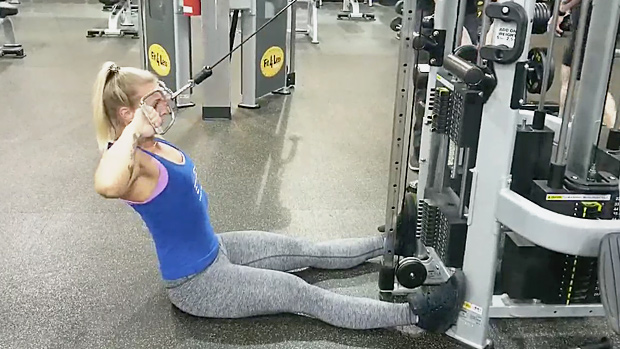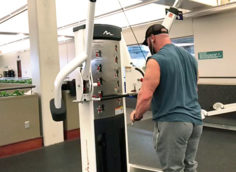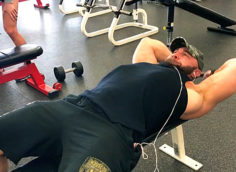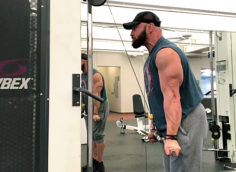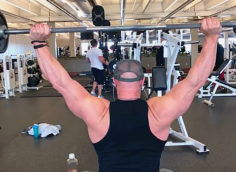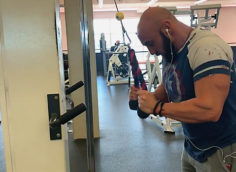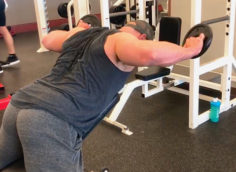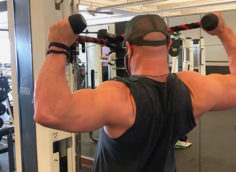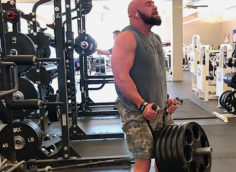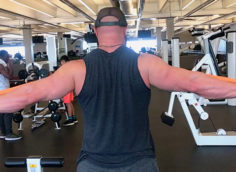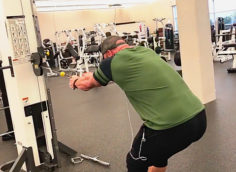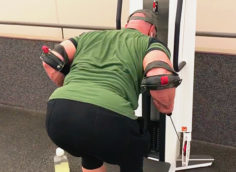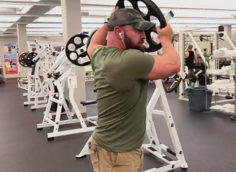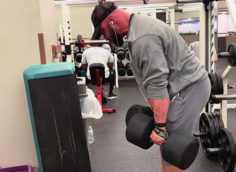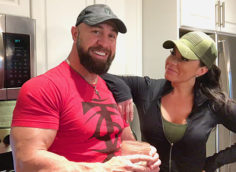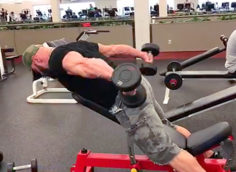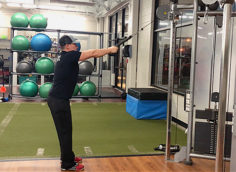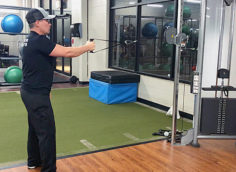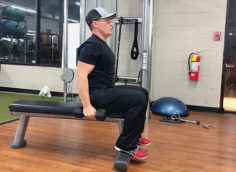April 11
Tip: Triceps Giant Set
Perform back to back: 12 cross-body cable extensions, 12 dips, 12 seated dumbbell French presses. Then repeat.
April 10
Tip: Tricep 30's
In this triceps extension variation, lower to your nose for 10 reps, then to your forehead for 10 reps, then behind your head for 10 reps.
April 9
Tip: Reverse-Grip Pushdown
To enhance your mind-muscle connection, try this. Be sure to roll your knuckles back towards your body and hold for a 2-3 count for 3-4 sets.
April 8
Tip: The Overhead Shrug
This not only works the upper and lower traps, but also trains elevation of the scapula.
April 7
Tip: A Giant Set for Giant Triceps
Combine rope pushdowns, overhead extensions, and dips into one giant set for guaranteed gains. Do 4 sets, 12 reps for each exercise in the giant set.
April 5
Tip: Lying Cuban Press
Use light weights and try this for overall shoulder health. You'll get some lower trap work too.
April 4
Tip: Face Pulls to Forehead
Healthy shoulders, rear delt work, and trap activation. Hard to beat this accessory exercise.
April 3
Tip: 70-Degree Smith Machine Row
Great exercise for the mid-back and traps. The machine allows you to get a harder upper-back contraction.
April 2
Tip: The Rogue Shrug
This combo of shrugs and mini-rows will really build middle and upper traps, as well as the rhomboids.
April 1
Tip: Band Pull-Apart
Bring up your rear delts anywhere with a band. Do 4-5 sets of at least 20 reps.
March 31
Tip: Standing Cable Row with Stretch
A good variation to use if you're already hitting the lower back hard on barbell lifts and want to take a break from traditional rows.
March 30
Tip: Cable Rows with Ab Straps
Here's a great rowing variation to use if barbell rows are too tricky for your cranky lower back.
March 28
Tip: Delt Sweeps
Finish off your heavy shoulder work with this pumptastic exercise.
March 27
Tip: The Bottoms-Up RDL
Build your glutes with this Romanian deadlift variation.
January 30
Tip: Beards, Baldness, and Sexiness
We jokingly asked Coach Carter about baldness and beards. And the big guy actually dropped some science on us.
January 24
Tip: The Rear Delt Swing
Not feeling your rear delts with bent-over lateral raises? Do these higher-rep swings to finish off shoulder day.
January 23
Tip: Cable Straight-Arm Pulldown Drop Set
Hit your lats throughout the range of motion with this untraditional drop set.
January 22
Tip: One-Arm Cable Rear-Delt Flye Drop Set
Change the angle to really nail your rear delts.
January 21
Tip: Front Shoulder Raise Drop Set
Build full-range strength with this drop set by going from sitting to supine.

